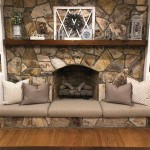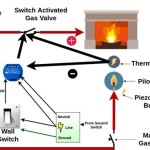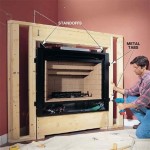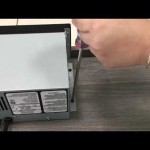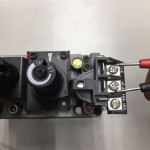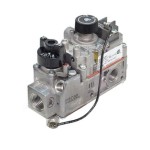Patios With Fireplaces: Enhancing Outdoor Living Spaces
The incorporation of a fireplace into a patio design significantly elevates the functionality and aesthetic appeal of outdoor living areas. A patio fireplace serves as a central focal point, providing warmth, ambiance, and a gathering space for social interaction and relaxation. The strategic integration of a fireplace transforms a simple patio into an extension of the home, blurring the lines between indoor and outdoor living. This article examines the various aspects of patios with fireplaces, including design considerations, material options, functionality, and safety.
Design Considerations for Patio Fireplaces
Careful planning is essential when designing a patio with a fireplace. Several factors must be considered to ensure the fireplace complements the existing architecture and landscape, while also meeting the specific needs and preferences of the homeowner. These considerations range from the size and layout of the patio to the desired style and functionality of the fireplace.
One of the initial considerations is the size and location of the fireplace. The dimensions of the fireplace should be proportional to the size of the patio. A large, oversized fireplace in a small patio may overwhelm the space, while a small fireplace in a large patio may appear insignificant. The location of the fireplace is equally important. It should be positioned in a way that maximizes its impact as a focal point, while also ensuring that it provides adequate warmth to the surrounding seating area. The prevailing wind direction should also be taken into account to minimize the impact of smoke and embers.
The style of the fireplace should complement the overall design aesthetic of the home and landscape. Options range from traditional brick fireplaces to modern, streamlined designs with concrete or metal finishes. The choice of materials and finishes should be carefully considered to ensure that the fireplace blends seamlessly with its surroundings. For example, a rustic stone fireplace may be ideal for a home with a natural, earthy aesthetic, while a sleek stainless steel fireplace may be more appropriate for a contemporary home.
Functionality is another key consideration. The intended use of the fireplace will influence its design and features. If the fireplace is primarily intended for ambiance and occasional use, a smaller, more decorative fireplace may suffice. However, if the fireplace is intended for regular use for cooking or heating, a larger, more robust fireplace with features such as a cooking grate or a built-in wood storage area may be necessary. The fuel source for the fireplace must also be considered. Options include wood-burning, gas-burning, and electric fireplaces, each with its own advantages and disadvantages in terms of cost, convenience, and environmental impact.
Integration with the surrounding landscape is crucial for creating a cohesive and harmonious outdoor living space. The fireplace can be incorporated into the landscape design by surrounding it with plants, trees, and other natural elements. This can help to soften the hard lines of the fireplace and create a more inviting and relaxing atmosphere. The placement of seating areas around the fireplace should also be carefully considered to maximize comfort and functionality. Comfortable seating, adequate lighting, and weather protection can all contribute to a more enjoyable outdoor living experience.
Material Options for Patio Fireplaces
The selection of materials for a patio fireplace significantly impacts its aesthetic appeal, durability, and overall cost. A wide range of materials are available, each with unique characteristics and suitability for different design styles and climates. Common materials include brick, stone, concrete, metal, and stucco. The choice of material should be based on factors such as aesthetics, budget, climate, and maintenance requirements.
Brick is a classic and versatile material that is often used for building traditional-style fireplaces. Brick is durable, fire-resistant, and relatively inexpensive. It is available in a wide range of colors and textures, allowing for a high degree of customization. Brick fireplaces can be constructed in a variety of styles, from simple to ornate, and can be easily integrated into existing brick structures. However, brick is porous and can be susceptible to water damage, especially in climates with frequent freezing and thawing. Regular sealing and maintenance are necessary to prevent deterioration.
Stone is another popular material for patio fireplaces. Stone fireplaces offer a natural, rustic aesthetic that blends well with outdoor environments. Stone is exceptionally durable and fire-resistant, making it an ideal choice for fireplaces that will be exposed to the elements. A variety of stone types are available, including natural stone, manufactured stone veneer, and flagstone. Natural stone offers a unique, one-of-a-kind look, but can be more expensive and difficult to install than manufactured stone veneer. Manufactured stone veneer is a more affordable and lightweight alternative that mimics the appearance of natural stone. Flagstone is a flat, sedimentary rock that is often used for paving patios and can also be used to create a decorative fireplace surround.
Concrete is a versatile material that can be used to create modern and contemporary-style fireplaces. Concrete fireplaces can be cast in a variety of shapes and sizes, allowing for a high degree of design flexibility. Concrete is durable, fire-resistant, and relatively low-maintenance. It can be stained or pigmented to achieve a variety of colors and finishes. Precast concrete fireplace kits are also available, which can simplify the installation process. However, concrete can be susceptible to cracking, especially in climates with extreme temperature fluctuations. Proper reinforcement and sealing are necessary to prevent cracking and water damage.
Metal is often used for prefabricated fireplaces and fireplace inserts. Metal fireplaces offer a sleek, modern aesthetic and are often more lightweight and portable than brick, stone, or concrete fireplaces. Metal fireplaces are typically made from steel, stainless steel, or cast iron. Steel fireplaces are less expensive but more susceptible to rust and corrosion, while stainless steel fireplaces are more durable and weather-resistant. Cast iron fireplaces offer excellent heat retention and are often used for wood-burning stoves. Metal fireplaces are available in a variety of styles, from traditional to contemporary, and can be easily integrated into existing patios. However, metal fireplaces can get very hot to the touch, so it is important to ensure that they are properly insulated or protected to prevent burns.
Stucco is a cement-based plaster that is often used to finish exterior walls and can also be used to create a decorative fireplace surround. Stucco fireplaces offer a smooth, seamless look that can be painted or textured to match the surrounding decor. Stucco is relatively inexpensive and easy to apply, making it a popular choice for DIY projects. However, stucco is susceptible to cracking and water damage, especially in climates with frequent freezing and thawing. Regular sealing and maintenance are necessary to prevent deterioration.
Functionality and Safety of Patio Fireplaces
In addition to aesthetics, the functionality and safety of a patio fireplace are paramount. A well-designed fireplace should provide warmth and ambiance while also being safe and easy to use. Considerations include fuel source, ventilation, fire safety, and user convenience. Proper planning and adherence to safety guidelines are essential to ensure a safe and enjoyable outdoor living experience.
The choice of fuel source is a primary consideration. Wood-burning fireplaces offer a traditional ambiance and the aroma of burning wood, but require a supply of dry firewood and regular cleaning to remove ashes and soot. Wood-burning fireplaces also produce smoke and emissions, which may be restricted in some areas. Gas-burning fireplaces offer convenience and ease of use, as they can be easily ignited and extinguished with the flip of a switch. Gas-burning fireplaces also produce less smoke and emissions than wood-burning fireplaces. However, gas-burning fireplaces require a connection to a natural gas line or propane tank, which may require professional installation. Electric fireplaces offer the ultimate in convenience and ease of use, as they require no fuel and produce no smoke or emissions. Electric fireplaces are also portable and can be easily moved from one location to another. However, electric fireplaces typically provide less heat than wood-burning or gas-burning fireplaces.
Proper ventilation is essential for wood-burning fireplaces to ensure that smoke and fumes are properly exhausted. Fireplaces should be designed with a functioning chimney or flue that is properly sized to accommodate the fireplace's output. The chimney should be regularly inspected and cleaned to prevent creosote buildup, which can pose a fire hazard. Gas-burning fireplaces also require proper ventilation to prevent the buildup of carbon monoxide. Gas-burning fireplaces should be installed by a qualified professional and inspected regularly to ensure that they are functioning properly. Electric fireplaces do not require ventilation, as they do not produce smoke or emissions.
Fire safety is a critical consideration for all types of patio fireplaces. Fireplaces should be located away from flammable materials such as trees, shrubs, and fences. A fire extinguisher should be readily available in case of emergency. Never leave a fire unattended, and always ensure that the fire is completely extinguished before leaving the area. When using a wood-burning fireplace, use a fire screen to prevent sparks and embers from escaping. When using a gas-burning fireplace, check the gas line regularly for leaks. When using an electric fireplace, ensure that the electrical outlet is properly grounded and that the fireplace is not overloaded with other appliances.
User convenience is also an important consideration. The fireplace should be easy to light and operate, and should be designed to be comfortable and enjoyable to use. The seating area around the fireplace should be spacious and comfortable, with ample room for guests to relax and socialize. The fireplace should be positioned to provide adequate warmth to the seating area, while also minimizing the impact of smoke and wind. Adequate lighting should be provided to create a warm and inviting atmosphere. Weather protection, such as a pergola or awning, can also enhance the usability of the patio and fireplace, especially in inclement weather.
Integrating a patio fireplace involves several considerations that extend beyond simple installation. Thoughtful planning encompassing design, material selection, and safety protocols is essential for creating an outdoor space that is both aesthetically pleasing and functionally sound. The result is an enhanced outdoor living experience, transforming a patio into a desirable extension of the home.

How To Build An Outdoor Fireplace Step By Guide Buildwithroman

30 Outdoor Fireplace Ideas Cozy Fireplaces

Should I Install A Patio Fire Pit Or Fireplace In My Backyard

Five Fabulous Outdoor Fireplace Ideas Coogans Landscape Design

Outdoor Gas Wood Burning Fireplace Backyard Firepits
.aspx?strip=all)
5 Benefits Of Outdoor Fireplaces Regency

Outdoor Fireplace Ideas Inspiration Dutchies Stoneworks

Outdoor Fireplace Ideas Inspiration Dutchies Stoneworks

Outdoor Fireplaces Keep You Warm In All Seasons Hearthside

53 Most Amazing Outdoor Fireplace Designs Ever Modern Patio

